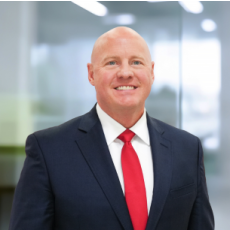MagniX is a technology platform company, developing powertrains and batteries for the electrification of transportation including for the commercial aviation industry. The company is headquartered in Washington State and is wholly owned by The Clermont Group.
You’ve been through some major changes over the past year moving from Atlanta to Seattle to join magniX as CEO. What motivated this move?
I didn't grow up in Seattle - a major industry hub - but aviation has always captivated me. Like many children, I always wanted to be a pilot. My entire career has been in aerospace and defense and flight continues to captivate me. Especially now with the newly available technologies, I find myself increasingly drawn to aviation and my passion has only grown stronger.
As I read more about the plans to electrify aircraft, I became excited about magniX’s leading technology which has flown on five different platforms. With my background in electronics, I saw a great fit in contributing to this solution. Aviation is responsible for about 9% of CO2 emissions in the transportation industry in the US, which in 2019 globally equated to just over 1000 million tons. This number will only increase if nothing is done and there is a global responsibility to field this technology, which was a significant motivator for me.
How can the electrification of short-haul flights be both environmentally impactful and more cost-effective?
Electrifying short-haul flights is at least at parity or better in terms of direct operating costs. In Europe, green fees are being added to traditional CO2-heavy flights, raising ticket prices. The primary challenge has been achieving sufficient energy density in batteries to make electric flight viable. Historically, the technology wasn't available, which is one of the reasons why we are developing our own battery solution.
Our 300-watt-hours per kilogram Samson300 battery, with a clear path to 400, allows for lighter batteries, more passengers, and cost-effective short-haul flights, making electric flight a reality.
Short-haul flights burn a significant amount of fuel during takeoff but can be more efficient with batteries. We can electrify a significant percentage of short-haul flights, making a meaningful impact. In the long term, hybrid technologies can improve fuel efficiency for mid-range flights, reducing overall fuel consumption by up to 40%. Separately, we're focused on assessing the need to build out critical infrastructure to support the electrification of flight. This involves a multifaceted approach to establishing a regional charging network, improved ground handling operations, and training operators. Collaboration with regulatory agencies is crucial to ensure safety and standardized regulations across different regions.
Are you optimistic that the industry in the US will see similar regulatory incentives to those being introduced in Europe?
Absolutely, I expect similar incentives and regulations in the US over time. These factors will make electric engines a great alternative to traditional combustion engines. We're working closely with partners like Harbour Air, who have been operating electric flights for five years, logging 89 flights to date on their de Havilland Beaver.
We've also partnered with Eviation for their electric commuter plane, Alice. We look forward to more such partnerships and initiatives that will support the adoption of electric aviation in the US, mirroring the progress in Europe.
Why is the route to market quicker for an electric powertrain versus a hydrogen-powered one?
Electric powertrains offer more immediate reliability and safety. Hydrogen technology still needs time to develop to a point where it can be relied on for safe flight. We control our own battery technology, which allows us to advance and implement it without waiting on external developments.
Soon, electric flight will become mainstream, with certification expected by 2027. Electric aircraft will be viable for commercial flights, tourism, and cargo applications, transforming a significant percentage of flights to electric within the next decade.
Now that you're at the helm of magniX, what's the vision for the company over the next few years in line with industry changes?
In the next 10 years, electric flights will become mainstream, starting with tourism and commercial applications. For some airlines, we can electrify 30-40% of their flights today, increasing to over 50% in the next decade. While hydrogen technology is promising, it requires more time to develop and certification of liquid hydrogen systems may take a decade. Our electric engines will pair well with hydrogen technologies, as we’ve already demonstrated in flight. So when it becomes available, we are readily adaptable to future advancements. For now, our focus is on leading the electric aviation revolution and setting the standard for the industry.
The vision at magniX is to commercialize our existing technology, which has many applications. We are working closely with partners to get this technology on their aircraft. Historically, magniX has been a propulsion company, but with our new battery technology, we can offer a full power train on any aircraft. Our goal is to get the entire propulsion system certified with the FAA and cross-validated with other regulators. Our work on identifying regulatory gaps and standards in partnership with NASA will pave the way for the whole industry. The challenge has been the energy source for electrified aircraft. Our engine is small and lightweight, but the battery technology needed to catch up. With the new magniX Samson300 battery and its leading energy density, we now have viable, cost-effective solutions for electric aircraft.





